The Shoes Under the Art World
The Shoes Under the Art World, Part I
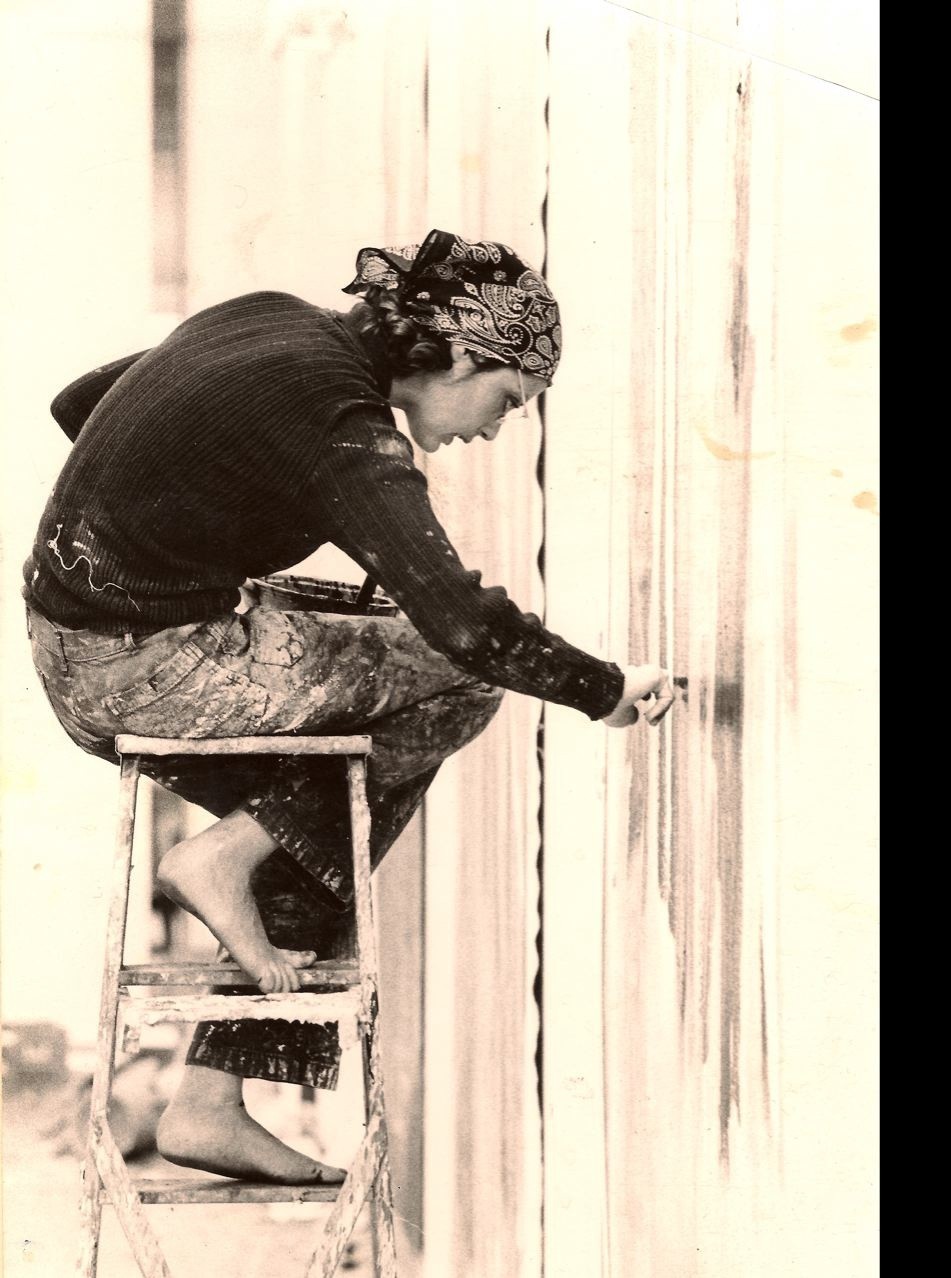
Pat Lipsky, 1974
It’s the hard, dirty secret — harder and dirtier for women: the art world loves men. Men are cool, big-swinging, hard-living; women, per GOP candidate Donald Trump, you’re never sure where they’re going to bleed from next, and this sanguinary fear extends to the world of canvases and museum wings. A woman walking into her opening in the same coat and jeans will never have the iconic swing of a man. The Art World — which can see so many things clearly — has monogender eyes.
It’s in our foundational painting and sculpting myths: Michelangelo staring down the marble block, liberating from it another slinky, lightly muscled dude. Pollock, Van Gogh, igniting everything in their lives for the canvas. What a woman might do — Louise Bourgeois, Mary Cassatt — comes as a flimsy afterthought. Webbing and tea-services. Even the salary angle works against it: woman artists, supported by men, were gaining skill in a pastime. Male artists gouge a living out of the arts for their families.
And there are other apprentice considerations: the knowledge, the tradition, has always been passed down man to man. Former apprentice to apprentice. Van Dyck studying with Rubens. Titian from Bellini. Basquiat emerging from the smoke and gossip of Andy’s factory. And with Basquiat, another consideration: a kind of fashion-ready comeliness, a swanky look we associate with brushes and turps. The male t-shirt and jeans uniform — Jackson Pollock (a kind of Brandoesque-looking painter) to Marlon. To be good-looking as an artist is essential. Question: what happens to the unattractive who chose to become artists? They get the picture, and quit.
From 1964 to 1968, when I was a graduate student in painting at Hunter — studying with the sculptor Tony Smith, who’d talked and drunk with Pollock and Mark Rothko — I didn’t get the other picture. That I was pausing at the threshold, standing in the cool lobby of a male world. But the weeding out started as we grew up through the years, towards the strange clipped-free harvest of graduation. Some grad students would be offered jobs: to stay on at Hunter, instruct the next crop. Tony liked me; we’d hung out together, he’d dined at my house, made the obligatory, Mad Men-era drinking-thus-nobody’s-fault pass. He liked my work. But those jobs would go to male students as they had in prior years, to Doug Ohlson and Ralph Humphrey, who’d cling on for life
Because in the worlds of the arts, where you bob and crest on a sea of opinion, the steadying effect is a teaching job: the dependabilities — salary, benefits, the teaches-at line on the resume — are one more way the discipline is passed down through the male line.
Part was payback for the evolutionary residue: the simple fact of brute male strength. Those boys had constructed Tony’s maquettes for him (these are to-scale first drafts of sculptures) or in some cases painted his paintings (Tony supervising), and also gotten him packed into cars and taxis and back to South Orange before dawn. Tony was a drinker — that’s another gendered aspect of the field. The big-shouldered man, paint on his t-shirt and belt loops, swirling and asserting at the party. These men would secure high-paying jobs in the university system, though none painted better than me.
It’s strange, in the years of Lena Dunham and Amy Schumer changing comedy, and Tina Fey making room in TV, and Hillary Clinton making her cicada-like, quadrennial return, to pan the camera across the rigid men’s club of the arts. From the Chelsea galleries to the spring and fall auctions at Sotheby’s and Christie’s (which offer the gender composition of a pro football team) to the museums where schoolchildren walk hesitantly on field trips to see the visual products the culture has treasured. Where every other aspect of American life has changed, the Art World offers this wonderful scientific breakthrough of time travel.
In that era, as Betty Davis clarifies in All About Eve — two great roles for women, written by a man — a female was defined as a Maine fisherwoman with a single catch: they were defined by the ability to land a man. The way I remembered it is telling: a drop in my stomach, as I heard, “Real women are made by whose shoes are under their bed.” Not buying the bed — not even, in that era, making the bed. But their achievement in that present pair of large, slightly abraded male shoes.
I had it wrong: memory preserving the horror stories of the time before every part of American culture began to change but the thin, glamorous slice in which I’ve painted and shown for four decades. What Davis’s Margo Channing actually said was: “And in the last analysis, nothing’s any good unless you can look up just before dinner, or turn around in bed, and there he is. Without that, you’re not a woman.” Not: not a wife, not a girlfriend, not an obliging and disappointed mistress. Not a member of your sex.
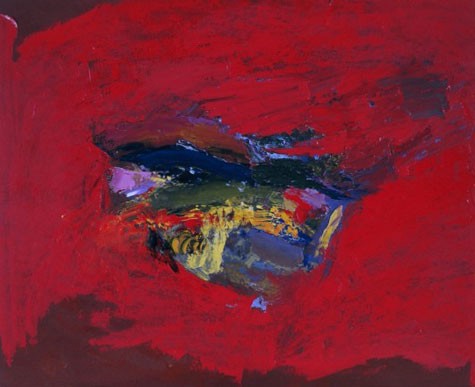
Pat Lipsky, 1973, Bumble Bee, oil on canvas.
In this particular denial career was icing. In the art world, it still is. The women who have done the acclaimed most — aside from Marina Abramovic, who had to create a new field that she could stand erect in — are those with that last-analysis artist him to share bed and dinner.
I did manage a university teaching job; there’s only so much that cultural obstacles can obstruct drive. I got a baby sitter to watch my two small boys. Unlike my male Hunter classmates, it wasn’t the subway, a job in the city: it was Rutherford New Jersey, doable via Port Authority. What I see most is the sun setting over the Hudson.
The other path: no children. Raymond Carver once wrote about the difficulty of raising kids while growing your writing talent — passing from workshop into writing alone and finding the editors happy to receive your envelope. A magazine had asked for an essay about his greatest influences: They expected to hear the patrilineal line; Hemingway, Cheever. What they got were his two children. He talked about having to learn to write in the front seats of parked cars, short stories, something he could do and take satisfaction in fast. He’d gotten through, Carver writes. “But I’d take poison,” he adds, “before I’d go through that time again.” And Carver was writing as a father.
I started exhibiting: that the painters Helen Frankenthaler and Joan Mitchell had already tilled the soil made planting easier. Helen and Joan had broken through in an even tougher time. Two qualities, not possessed by me — and maybe essential, in this world of painting, with its hopes and nightmares all leading to the cool hushed rooms of the museums. Any field is about what you bring, what you’ll do, what you give up. Joan and Helen were both rich. They were both childless. They didn’t have to worry or marry their way into support; and they didn’t have another project, always waiting outside the studio for them to put down the staple gun and canvas. That’s what Virginia Woolf meant: a woman who wants to write (or paint) must have an income. The room of your own is the room you’ve paid for with your own money, with no one needing you — the tug on your body — outside. You need that room, with money left over for art supplies.

There is a special museum for women in the arts. It’s called The Museum for Women in the Arts. It experiences a perpetual budget crisis. It’s not in New York, or London, or Los Angeles — the centers were the art world fight gets clawed, bloodied, and recompensed every day. It’s on a sedate block in Washington, D.C. When the major museums do a big-ticket retrospective of a woman, it’s with a tight air of social service, of a funding box ticked, of nobly pitching in and doing their part. It never feels quite on purpose; it’s like a theatre letting Sarah Bernhardt or Eleonora Duse play Hamlet or Lear.
From the Renaissance on, the female artist’s best friend, their most important agent was money: the Marchioness of Pescara, Vittoria Colonna, the poet Michelangelo had an amorous relationship with — she and Michelangelo exchanged sonnets; it’s known that Michelangelo kissed her corpse — is a case in point. Colonna already had one kind of power, and could naturally reach for another. Painting was different. It took training — rigorous and years-long, and not possible because studios would accept no female apprentices. The only women with a chance at painting were — oddly enough — nuns. Women who’d exempted themselves from sexuality entirely. Or daughter artists educated by artist fathers. Even here, training was limited: women — allegedly more delicate and modest — were not allowed to work from the nude. Until the nineteenth century, they couldn’t even draw from live models.
Lee Krasner was a painter who was around — around means showing, arguing with critics, standing with a great deal of agitated air around her at the sudden edge of a party — when I first became a professional. Lee was Pollock’s widow. She had black wreath power. We got together in two settings: her home in East Hampton; in Manhattan outside of summer. She met me on the porch of the couple’s famous clapboard house — in the working class part of East Hampton (a nearly impossible sentence to write now), on Springs Fireplace Road. Lee wore a bluish checked dress that struck me as oddly housewifey. Was this really the widow of the great painter? This small-seeming woman, dressed not as a kind of painting demon, but in a demure dress that you imagined at a screen door, nodding at words from the mailman.
She led me to the brown barn behind the house, where Jackson had painted many masterpieces.
The floor was covered over with linoleum then — Lee was painting in the studio. She also showed me the house with a built-in bookcase Jackson had constructed, so no one could see what he was reading. (He was a clandestine, devoted reader.) She told me the story of his death which I already knew almost by heart.
The word I craved — had traveled to East Hampton for — about how to be an artist in a male world, she did not pronounce it. The difficulty not just of learning your craft, of finding people willing to risk on it, the trick to doing it in a world where the bodies and voices were broader and deeper than yours: she didn’t share that. Just the bookcase, the studio. The visit was still about the shoes and the bed.
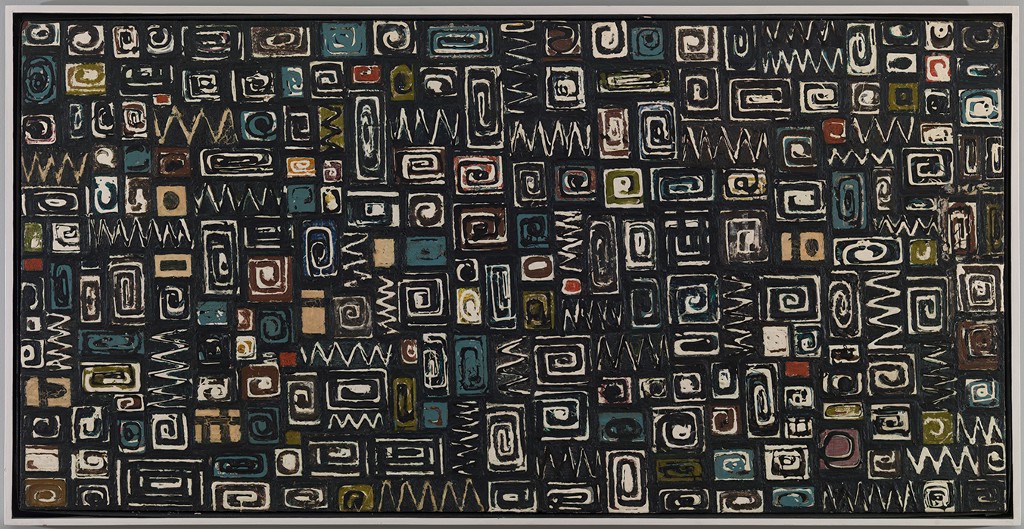
Lee Krasner, Untitled, 1949, oil on canvas
The second time — maybe due to the city location, with its appointments and the air in New York of deals being struck that you are not part of — was more about commerce. Lee did talk shop. She described how she was planning to get her work shown at a top gallery. She would be hard-bargaining. Offering a two-for-one deal that whichever space — Marlborough-Gerson, Pace, the bluest of chips — would take. Exhibit Lee’s work, and you would get the Pollock estate as well. A brilliant play of the hand she’d been given. You’re a famous man’s widow: do not resist it, be it. Instead of getting that — understanding what it meant about the world that still means everything to me — at the time I had another response. I had the gall to feel secretly sorry for Lee. It’s probably the way some young female artists feel about me now.
Four decades later I realize I had this wrong, too. Lee was successful even then — with tributes and exhibitions to come, and more attention than I’ve had at my similar age. It’s one of the ways we do age: Fates that look awful before becoming surprisingly rosy and best case, as time carries us to the spot where we understand them.
And Lee paid her dues — paid them differently than Helen or Joan did. She was middle class: you don’t get the same airy choice about not paying or finding a creative way. During the forties and early fifties, big shot critics, collectors and gallery people would come by to see Jackson’s paintings. They’d walk right past hers. She’d stand by while they raved about his work. The hard face you have to grow there. Now, they would have to rave about both. For a woman there’s always the factor of how well you choose.
And if you end up mid-level — with a moderately successful husband like painter Balcomb Greene, as his wife Gertrude chose — this will never work. Even if you stand hard-faced by while dealers look at his paintings and ignore your work. Because fate, death, and sales will never deal you that power.
Lee is buried in the same cemetery in East Hampton. Behind Jackson, with a smaller headstone. But from a different vantage point, it looks like Lee is buried in front of him.
Lee got the posthumous retrospective at MoMA. To see what that means — what it represents, to any young woman paying the twenty bucks and walking under that giant, tribute-to-modern-design helicopter — let’s look at MoMA’s record. After the 2004 reopening of the Museum of Modern Art, of 400 objects exhibited from the permanent collection, only sixteen were by women. The Metropolitan has an excuse: it faithfully reflects the biases of history. In that way, a walk through the Met (along with every lovely sensation and moment it gives) is a mobile Virginia Slims ad: women are subjects, rarely creators, even less innovators. Until 2008, four women had been given MoMA retrospectives: Lee, and Helen, and Elizabeth Murray and Louise Bourgeois. Of these four, three had made famous marriages: were the arm and arm of an artistic couple. Krasner/Pollock, Frankenthaler/Robert Motherwell, Louise Bourgeois/Robert Goldwater. If the shoes weren’t still under the bed, they’d been there long enough. With a double irony — the museum was founded by three room-of-their-own women; Lillie P. Bliss (God, the names of the past), Mary Quinn Sullivan, Abby Aldrich Rockefeller.
Straight-up celebrity will do the job too. Those shoes under the bed. Yoko Ono’s work was just the subject of a MoMA exhibition. Ono — out of all the female artists in the world being favored on those walls? And what a varied career — with her music, videos, her three marriages, her pricey bag of nails (exhibited in London when she first met Lennon). We can have an honest debate about her art; I’ll just speak as an artist — to me, her body of work looks slim. But we can’t debate about her position. Her Wiki says it all: “She is the widow and second wife of John Lennon and is also known as a multimedia artist, singer and peace activist.” The “is also known” is from the lips of Margo Channing, of Joe Mankiewicz writing words for Bette Davis; what you must know to understand, the first square on the board, is she was the wife of this famous man.
There’s Frida Kahlo. Again, we can debate the work. My sense — walking past walls of Bellini, Cezanne, Rothko (and how awful, to love a field, and to find the names for that love come out male) — is that it’s hard to understand how anyone with an eye could really be interested in her painting. (My sense is the work is admired most not in museums but in library carrels, by the PhD candidates. Their theses have titles like, “Frida Kahlo — Beyond the ‘Painter of Pain.’” As if she’s less painter than experimental neurologist.) What’s constantly rehashed is the saucy stuff, the narrative stuff, the rooms with arguments and disarranged bedclothes. In essays and reviews her marriage, divorce, and remarriage to Diego Rivera. There’s the pet monkey, too, the gardens. But the story is the marriage: the aspiration, of life lived upright and asleep in the arts. That is, it isn’t art being written about, it’s Kahlo’s messy-glamorous life.
The last is Georgia O’Keeffe, who also made the connection to a powerful man.
In the early part of the twentieth century — reading her chances like a successful Edith Wharton heroine — she’d known to align herself with a male star. O’Keefe’s first successful watercolors, like the lovely Evening Star — which she sent her future lover Alfred Stieglitz — even use star imagery. It’s like she was painting the figure she understood she’d have to catch. Stieglitz responded: with the offer of a year’s stipend to paint in New York City. The rest is pretty predictable. She became the (token) woman painter of her time. You’d reel off the men — Edward Hopper, Arthur Dove — and then, if you were in mixed company, and if your impression mattered to you, you could add “and of course those great flower paintings and parched landscapes of Georgia O’Keefe.” But even to go token, to sink your fingers into the one available spot, the deal was to find it with an escort, as a plus-one. It hasn’t changed much since: for all of the non-sexual, higher-self, best-angel pleasures of a wall, good lighting, and a frame at the level of your eyes; for a woman, who you’ve slept with is still one of the best seating guides to where you’ll be placed, how to move ahead in the art world.
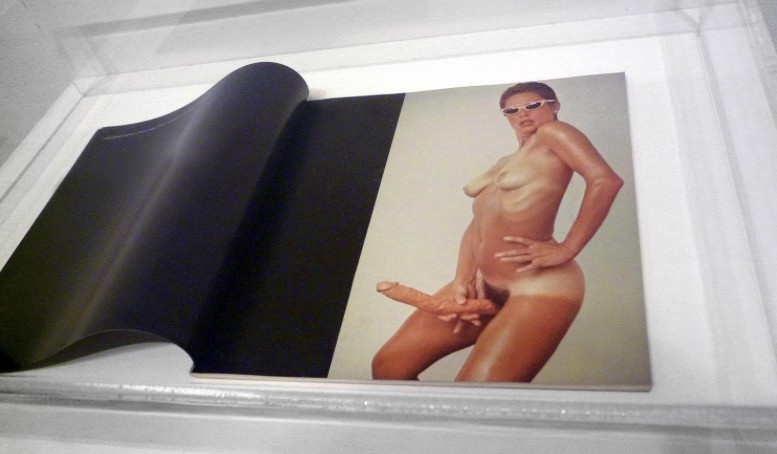
Lynda Benglis ad, Artforum, 1974
And if it’s not a penis that shares your last name, it’s the ability to wield one. This was Lynda Benglis’s protest and innovation. Lynda and I are the same age, lived the same locations — both of us, in the iron-front warehouses and cobbled streets of 1970’s SoHo. Lynda needed to get attention, as a woman artist. She pulled together three thousand dollars, invested in a full page Artforum ad. The artist with a dildo. It worked; as if the penis, proximity to one, or a reproduction of same, absolutely situates art world attention. As performance art, and critique of the effect of the performance, it remains one of the great pieces of criticism of the art world, and perhaps the best advertorial ever. It made her famous, and that distant fire continues to spark her career, embering all over the world. Her Wiki is the artist’s dream of travel: “She currently lives between New York City; Santa Fe; Kastelorizo, Greece; and Ahmedabad, India.” It’s what can happen to a woman, when you find a way to wear the shoes.

One day, in the mid-seventies, sitting in the back room at my gallery, the famous André Emmerich, I heard a conversation between the gallery director Bob Miller and a collector he was trying to woo. There’s a great phrase, from Samuel Butler: “Any fool can paint a picture but it takes a wise man to be able to sell it.” Bob was trying to pitch one of mine — it wasn’t a wallet-cruncher, four thousand dollars. From that back room, I paused, and listened. Here was the heart of the art world. Bob talked about “a Lipsky” and “a Lipsky on your wall,” and sometimes he said the name “Pat.” It was gratifying. You felt name-brand. And then I noticed — he never said “her” or “she.” My gift, in my name, was androgyny. You could buy without knowing you’d be going home with something female.
Your Ideas Are Annoying And You Should Stop Bothering Us With Them
The New York Times gets a lot of criticism, but any paper that tells you to stop bothering your friends about meditation and forget about idea of your brain living forever in the same weekend is probably doing the kind of important advocacy work that should be honored with awards. There needs to be a journalism prize that recognizes the significance of telling people to shut the fuck up is what I’m saying.
You Can Hate The Player AND The Game. Oh, And The New Game The Player Is Also Playing.
“What takes unstoppable confidence is writing a book condemning a previous period of your life as empty and deluded, then selling the keys to such a life to the rubes still scrabbling after it. Strauss has been charging a presumably substantial sum for self-improvement guidance even while writing a book in which he confesses, ‘I’ve made a mess of everything and may never experience true happiness, love and family.’ Sure, another quick Google search suggests that Strauss has worked out some of his problems, but not before a moment of truth on the Inca Trail to Machu Picchu where he has to keep ducking off into the bushes to apply Neosporin to a penis rubbed raw by ‘overuse.’ Nevertheless, Strauss has succeeded. An editor friend recently told me that one of his authors, a well-known entrepreneur, is ‘obsessed’ with Strauss and his programs. Not the pickup stuff. ‘No, no. The rest of it.’”
— I somehow missed the whole Neil Strauss comeback until this weekend, when his press tour became nearly inescapable (much like the terrible come-ons he spawned were to a generation of young women just trying to get a drink with friends a decade ago). Anyway, I guess he has grown and changed (from even last year!) and now he has learned that wiping your dick up on every thigh that brushes by is not the true path to happiness or whatever. Hey, if I write a book about how to do something despicable right now will you guys also buy the sequel in ten years where I come to understand that true happiness lies in the opposite of whatever the fuck I told you to do just now? Because that sounds like the kind of racket I could really enjoy.
Lowly, "Fire"
I have what I guess you would call a diminished capacity for joy, in that there is very little that makes me smile anymore. Even the places in which I once found pleasure now see me broken and bereft, wondering what happened to the delight with the world that came so easily before. Everything feels empty and fake and the simple act of showing up in hopes of being entertained seems like a gross complicity in the hollow artifice that those who are still able to experience enjoyment use to distract themselves from the creeping certainty of death. Nothing tastes good. Nothing tastes of anything at all. So when I come across something that actually makes me sit up and pay attention I do a fairly rigorous self-inspection. Did I recently hit my head on something heavy? Am I having some kind of chemical reaction to decongestant medication? Have I been fooled by a brief bout of nice weather into believing things are better than they are? Once I have assured myself that none of those conditions apply I go back to whatever it was that somehow lifted me out of my state of suspended emotional animation and re-assess. Do I still feel? Does it still move me? Is it still good? This song, by a band about which I know nothing, is indeed good. It is, in fact, great. I first heard it on Thursday and have listened to it multiple times each day every day since then. I am not quite sure what it is that makes this song as good as it is but sometimes magic happens and things that shouldn’t make sense in any rational world cause a crack in the crust through which the most inexplicable mysteries emerge. Magic happens here. Enjoy.
The Secrets of Dragoncon: The Rise of the Highly Hot Nerd
by The Awl
Since 1987, the massive Dragoncon has besieged Atlanta each year with cosplaying hotties and scantily clad shut-ins who have suddenly come outside. It’s a real party! Come along inside the Anything But Clothes party, and enjoy a classic appearance by Carrie Fisher. After all, “Star Wars fans are like children of alcoholics,” so, she’ll fit right in. Ugh, if Episode VII is bad I literally don’t even know what I’ll do.
New York City, October 8, 2015

★★★★ Mildness blanketed the street, as relaxing as the day before had been stimulating. The light was tinted in grimy but lush shades, gold tones bruising into purples. The pre-kindergarteners were already out in the playground before dismissal, chasing one another with hula hoops. On the walk away from school, one of them stooped to pick up an oak leaf that had fallen in mid-change. Teens raced through the sidewalk crowd like broken-field runners. Edges softened in the thick glow of afternoon. Orange light flamed off faraway windows in New Jersey.
Buy Yourself Happy
Self-delusion is one of the most important survival instincts you have: If you were always aware of just how awful you are you’d have cranked up the gas and emptied out the medicine cabinet long ago. Even in those moments when you unintentionally discover that someone else’s sense of your self is wildly at odds with the idea you carry around, you pretend that the fault lies in their own unhappiness or personal problems or any other excuse you can come up with to keep from facing up to just how ugly you are inside. Still, there is that nagging doubt that no number of drinks or drugs or sex partners or narcotizing episodes of television can kill: What if I’m not even the hero in my own story? What if I’m actually as appalling as I imagine in those rare moments of clarity where I am able to step out of my own personal narrative and see myself as others must? Is there anything I can do to change my trajectory and somehow become the better person I need to be? The answer, sadly, is no: People don’t change. You are born a certain way, your parents make a few permanent alterations, life bats you around a bit and voilà, you’re stuck. You’re you and you suck and that’s the way it’s going to be until you die. But you can always buy a few things to make you think you’re someone else for a while. Someone less bad. That’s about the best it’s going to get for you, unfortunately. I wish I could tell you something better but we both know it’s already more than you deserve.
WeParty Like It's 1999
by Brendan O’Connor
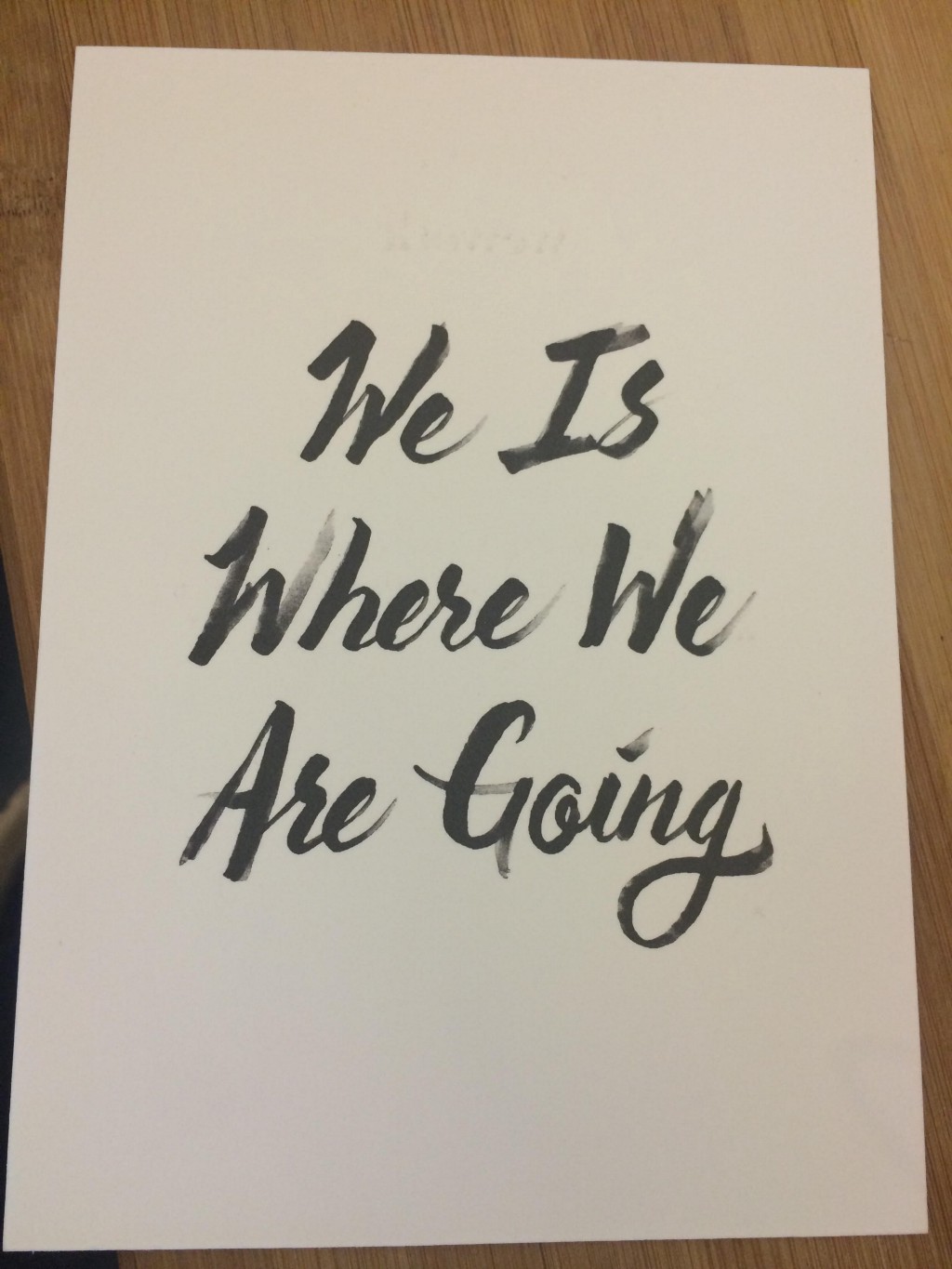
Last week, members of WeWork, an office-space concern based in New York City and most recently valued at ten billion dollars, were invited to an event on Tuesday, at 7:30, on the fourth floor of WeWork’s 18th street location. “We Is Where We Are Going,” the front of the invitation read. “We invite you to help us build something new — a home for people who join as ‘me,’ but become part of a greater ‘we.’” It seems likely that this event — which was already pretty bumping by the time I arrived, around 7:20 — concerned WeLive, WeWork’s expansion into residential development.
WeWork’s original business model is to lease office space from traditional landlords, renovate it to appeal to the aspiring entrepreneurial class (think kegs, ping-pong, and lots of couches for sitting on your laptop), and then rent it to them at prices significantly higher than the surrounding market rate. With WeLive, WeWork hopes to collapse any remaining distinction such people make between their work and their life, offering living spaces in the same building as their co-working office spaces. According to financial statements provided to investors last year and obtained by BuzzFeed, WeWork expects that WeLive — which has not yet launched — will supply twenty one percent of the company’s overall revenue by 2018, bringing in over six hundred million dollars in annual revenue after three years. As BuzzFeed’s Nitasha Tiku points out, however: “Much like WeWork’s office-rental arm, projected earnings from co-living depend on a steady stream of customers willing to sacrifice privacy for proximity to like-minded people.”
WeWork’s first slated WeLive location in New York, 110 Wall Street, is a building heavily damaged in Superstorm Sandy, owned by Rudin Management, one of New York’s largest development firms, and apparently leased to WeWork in its three-thousand-square-foot entirety. (WeWork is also partnered with Rudin in the development of a six hundred seventy-five thousand square foot pile of boxes in the Brooklyn Navy Yard.) In the elevator riding up at the 18th Street location on Tuesday, one of my fellow passengers remarked to his friend, “Dude, we’re gonna be neighbors.”
“I should probably tell my wife about this,” his friend replied.
“Does she not know?” the first guy asked.
“Well,” the second explained, “she’s overseas. We FaceTime.”
On the fourth floor, WeWork employees at a desk took people’s names as they stepped off the elevator. To the left, beyond floor-to-ceiling glass doors, a large, open room full of people enjoying post-happy hour drinks smiled and laughed. Loud music played. “Are you on the list?” I was asked. I was on the list, having emailed to RSVP. “Oh, I see, you still need to sign an non-disclosure agreement.” Hmm. Why is that necessary? “Confidential information.”
Two people who had signed the NDA were ushered through the glass doors and offered drinks. A WeWork employee suggested I take a copy of the NDA and look it over. I took a copy and pretended to look it over while texting my editor about whether I should sign it. “Follow your heart lol,” he concluded. I said thank you, and got back in the elevator.
As the doors closed, I heard a woman who had appeared to be a supervisor ask an employee with the list of names, “Did he argue with you?”
“A little,” was the response.
Anyway, I’m told that the apartments atop 110 Wall Street come fully-furnished, will rent for between five hundred and seven hundred dollars per month for a small studio, that rent goes up fifty percent after the first six months and a whole lot more after the first year. According to market analysis conducted by MNS, the average rent for a studio apartment in a building with a doorman in the Financial District was just over three thousand dollars per month. So, depending on where WeWork rent ends up, that could be a pretty good deal — although, as Tiku points out, the projected rents do not include WeLive’s “services” fee, which will double to one hundred dollars a month by 2018. I’m also told that residents have to be directly associated with a member of WeWork (i.e. in a three-bedroom apartment, one has to be a WeWorker), and that there is, apparently, a bar in the laundry room.
Asked to confirm or deny any of this, WeWork declined to comment.
In its prospective residential offerings as in its commercial product, WeWork’s core innovation — and the sharing economy’s writ large — seems to be not, in fact, in making things more affordable, but rather in coming up with new ways to obscure where the true costs lie.
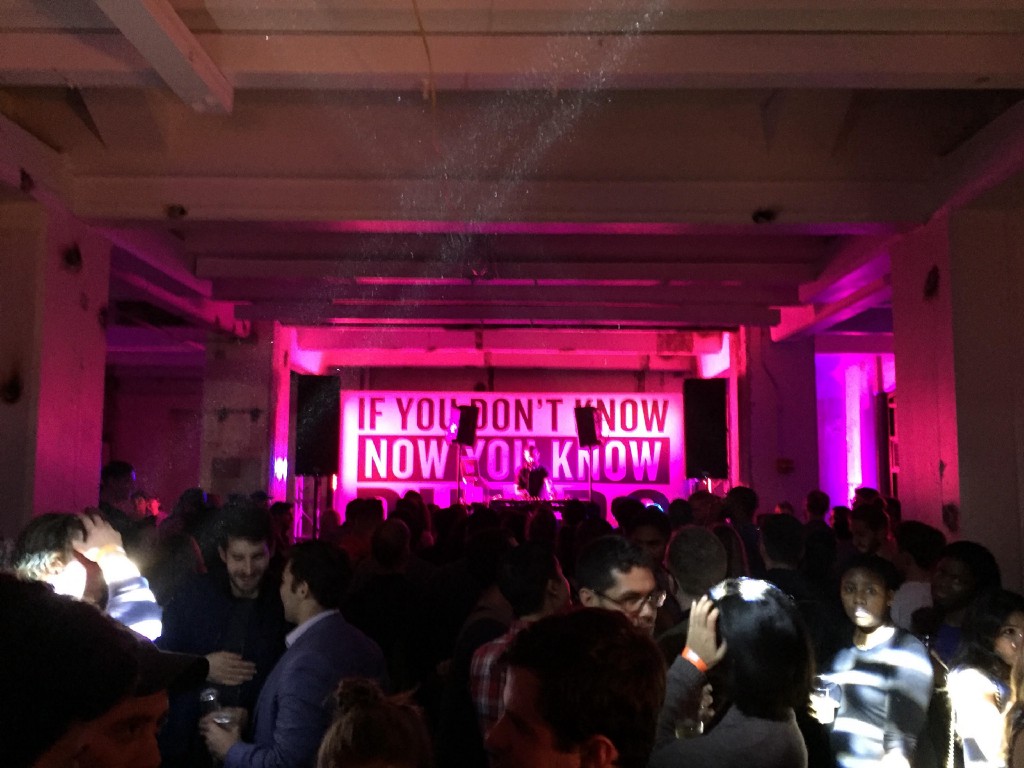
On Thursday evening, WeWork threw another party — this one less informational and much more fun. It was billed as a “warehouse party,” but it was in DUMBO (or “Dumbo Heights,” as WeWork calls it), at WeWork’s newest location — its first in Brooklyn. “Pizza and Hip-Hop” was the theme. The location opened in August, but the space the party took place in was spare and unadorned. (Almost like a warehouse!) The party was full of people attractive in the way that photographs well for, oh, I don’t know, investors? advertisers? Instagram? which is another way of saying, if not attractive, at least well dressed, mostly.
There were a lot of carefully-crafted beards. There was a high concentration of man buns and a higher concentration of high-and-tight haircuts, though not so many to the degree of Brad Pitt Nazi-Killer. Here and there, some streetwear. Drake’s latest hit, “Hotline Bling” came on. “That’s that Toronto shit,” someone remarked. Later, an earlier Drake hit, “Back to Back” came on, and people rapped.
As I navigated my way through the crowd looking for pizza, a blonde woman stopped in front of me. “You look lost,” she said. Was she a member? An employee? It was unclear. In any case, she wasn’t exactly wrong.
Before Q-Tip played, WeWork’s long-haired Israeli co-founder and CEO Adam Neumann, wearing a grey t-shirt with the word “Creator” in all capital letters emblazoned upon it, made a short speech.
“This is a Brooklyn brand. The brand started here,” he said, which is only sort of true — Neumann, along with WeWork co-founder Miguel McKelvey, originally launched a co-working space business with the (somewhat shady?) Brooklyn landlord Joshua Guttman called Green Desk, in 2008. Guttman bought Neumann and McKelvey out in 2009. “As soon as we could come back, we did,” Neumann said. “It was illegal, but as soon as it was legal, we came back.” (Quite honestly, I’m not sure what he meant by this.)
“I travel all over the world. This is the center of the world. The people, the beer, the energy. It all comes from here. It’s the Brooklynization of the world.” The crowd cheered. Adam ordered that more shots be handed out. The crowd cheered again. “Whatever you want to do, the world will help you do it. You will raise investors. Whatever you want to do, whatever God wants you to do, whatever the world needs you to do, you will do it, because each and every one of you,” (here, he pointed to his shirt) “is a creator.”
I tried to catch Adam, who has previously referred to his company as a “capitalist kibbutz,” as he left, but I guess I picked the wrong exit to stand in front of, because I didn’t see him leave. Having missed out on the pizza, I followed suit shortly thereafter. I’ll just have to catch Q-Tip another time.
Video Games Are As Much About Sadness As Everything Else In Life
“Games are consumed actively in a way that is very different from encounters with books, movies, or other art forms: by definition, one’s time with a game is time spent taking actions, making decisions; and video games generally require a long time to play — dozens, even hundreds of hours, spread out over weeks or months. All this means that an account of playing a video game inevitably involves a recollection of a portion of one’s own life, including a few of one’s own successes and failures, decisions and regrets (though the actions and results of the game are simulated, the choices, and the emotions they inspire, are not). Memories of a game and of the life led around it often bleed into each other.”
— This Gabriel Winslow-Yost piece on video games is worth your time.
A Poem by Jennifer Michael Hecht
by Mark Bibbins, Editor
Gunga Had Steady Work
You can do it. You just
can’t do it again.
What shall we do if the no
stays no, if the no
keeps coming, and goes on no?
If the sun
keeps blaring out and won’t
shine in? What if
I’m still more gunga-doubt
than ever Gunga Din?
Than ever Gunga Din was.
He hauled water for
British soldiers.
I don’t care if the grapes
are sour as
no grapes are allowed
on this diet.
To my body I say: Though
I’ve belted you
and spanxed you, By
the living fraud
that flanks you, You’re a
better man
than I am, Gunga Din.
He was abused, was brave
on the field, and killed there.
Eulogized as a better man,
by one of the abusers, all
in the mind of Rudyard.
Kingpin of a childhood
in India till banished
to a bitch minder in England
who taught him to flinch.
You can do it. You just
can’t do it again. What will
we do if the no stays no, if
the no keeps coming, goes on
no? If the sun keeps shining out
and won’t shine in? What if I’m
still more gunga doubt than
ever Gunga Din?
Jennifer Michael Hecht’s most recent poetry book is Who Said (Copper Canyon, 2013).
